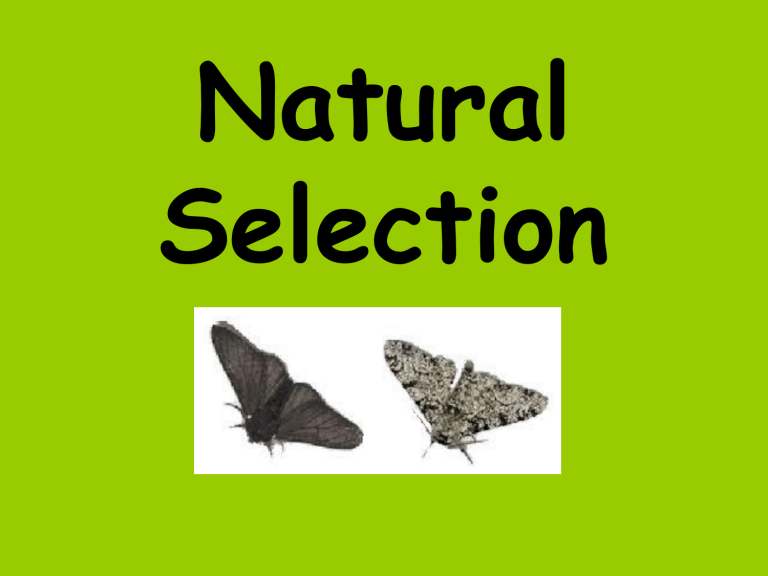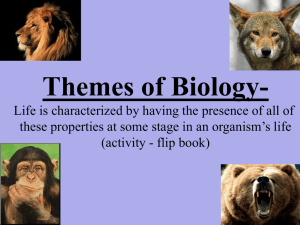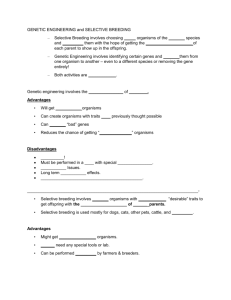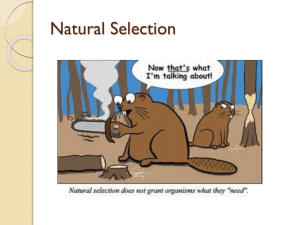
Natural Selection A species is a group of organisms with similar characteristics whose members are able to reproduce and make fertile offspring. Charles Darwin was a British naturalist who developed the theory of evolution in the mid1800’s. He developed his theories while studying hundreds of species as he sailed around the world on the HMS Beagle in the 1830’s. He was especially interested in the variation among animals in the Galapagos Islands. He published his theories on evolution by natural selection in 1859 in a book called On the Origin of Species. Natural selection is the process by which organisms that are best adapted to their environments are the ones most likely to survive and reproduce. It is sometimes called “Survival of the Fittest.” The concept of natural selection is actually quite simple, and its 4 principles are all common sense. http://franklinscience.weebly.com/natural-selection.html 1. Variation exists within a population. Not all individuals within a species are exactly alike. Sexual reproduction and random mutations create variation in a population. 2. Among this population, there is competition for resources. Organisms can produce more offspring than their environment can support. If there are plenty of resources (food, water, mates), then the population will keep growing until its carrying capacity has been reached. Carrying capacity is the maximum number of organisms an area can support. When this limit is reached, individuals must compete against one another for food, water, mates, etc. 3. Survival of the “Fittest." This is survival by those organisms that are best adapted to their environment. Note that "fittest" does not necessarily mean strongest or fastest or smartest. It refers to those that are best adapted. An organism that is well adapted is more likely to survive and reproduce, passing on its successful traits to the next generation. 4. Genetic Inheritance. Genes are passed from parents to offspring. Parents with successful genes that provide a survival advantage, pass those genes on to their offspring. These parents are also likely to have more offspring than other, less "fit" individuals. Humans can change an organism’s traits by selecting which organisms will reproduce. Selective breeding is the deliberate breeding of plants or animals for desired traits. It is also called artificial selection. Much of the food we eat is a result of selective breeding. For example, cows may be bred for milk production, and chickens may be bred for egg production. Most pets are also a result of selective breeding. Domestic cats were bred from wild cats, and dogs were bred from wolves. Link to Natural Selection video: https://www.youtube.com/watch?v=JiSuK_Dvdtg





